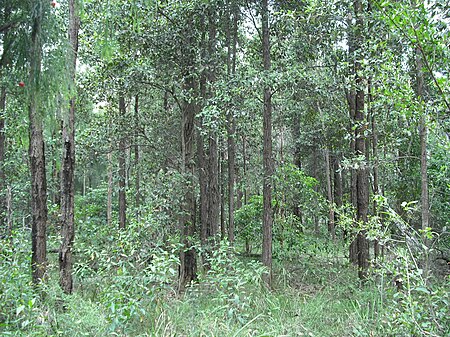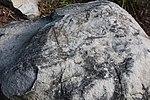Sydney Turpentine-Ironbark Forest

The Sydney Turpentine-Ironbark Forest (STIF) is wet sclerophyll forest community of Sydney, New South Wales, Australia, that is typically found in the Inner West and Northern region of Sydney. It is also among the three of these plant communities which have been classified as Endangered, under the New South Wales government's Threatened Species Conservation Act 1995, with only around 0.5% of its original pre-settlement range remaining.As of 26 August 2005, the Australian Government reclassified Sydney Turpentine-Ironbark Forest as a "Critically Endangered Ecological Community", under the Commonwealth's Environment Protection and Biodiversity Conservation Act 1999. The original extent of the forest was 26,516 ha, but now only 1,182 ha (or 4.5% of original extent) remains. It is a transitional biome between Cumberland Plain Woodland in the drier areas and Blue Gum High Forest on neighboring higher rainfall ridges.
Excerpt from the Wikipedia article Sydney Turpentine-Ironbark Forest (License: CC BY-SA 3.0, Authors, Images).Sydney Turpentine-Ironbark Forest
Epping Road, Sydney North Ryde
Geographical coordinates (GPS) Address Nearby Places Show on map
Geographical coordinates (GPS)
| Latitude | Longitude |
|---|---|
| N -33.794433333333 ° | E 151.13543333333 ° |
Address
Epping Road 23A
2113 Sydney, North Ryde
New South Wales, Australia
Open on Google Maps





